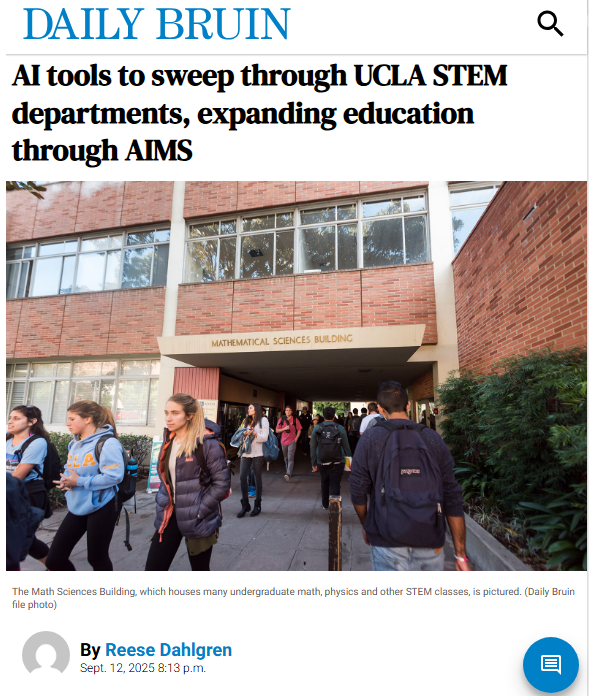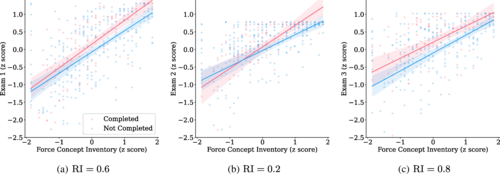How can we support introductory science students in building necessary quantitative and other problem solving skills?
Many introductory science courses require basic understanding of calculus and other quantitative skills. Due to varying levels of prior math preparation among students, there are large grade disparities in these courses. In this project, we will build on promising results from a project funded by UCLA’s Teaching and Learning Center (TLC), described in more detail in our 2025 Physical Review Physics Education Research publication.
The interventions are:
- Supplemental Math assignments designed to address gaps in students’ mathematical knowledge, using scaled incentives to encourage less prepared students to complete supplemental assignments, without introducing the “gifts for the gifted” problem;
- State-of-the-art AI tools in a safe and equitable environment, without any extra cost to the student, helping students with the supplemental assignments and enriching the overall learning experience in the course.
Together, these components form the AI and Math Skills (AIMS) program. Our prior research shows that these interventions support student learning and reduce inequities in exam performance.
We are grateful for financial support from UCLA’s Teaching and Learning Center.






